The Apple iPad Pro Review
by Ryan Smith, Joshua Ho & Brandon Chester on January 22, 2016 8:10 AM ESTSmart Keyboard
The other half of what makes the iPad Pro worth talking about is the Smart Keyboard. For those that are unfamiliar with how this keyboard works, in essence it’s really a flip cover that happens to hide a keyboard inside of it. This is yet another thing I mentioned that the iPad really needed to improve its potential as a productivity tool.
I’m going to go ahead and spoil this section by saying that while the Smart Keyboard is worthwhile if you’re typing out more than a paragraph, this feels like one of the clunkier aspects of the iPad Pro.
However, the important question is how I got to that conclusion. Going over the user experience of the keyboard is a pretty simple matter. Attaching the cover to the tablet works the same way it always does, which is accomplished by placing the edge of the cover onto the edge of the tablet which also contains the Smart Connector. There are some strong magnets that help with alignment here, and provide the positive pressure needed to ensure that the data and power pins of the Smart Connector are firmly connected to the keyboard.
Once the cover is connected, setting up the keyboard is done by folding it out and doing some origami until the tablet is docked into the right place on the keyboard, which has a noticeable notch to it. Aligning this despite the strong magnets does take some work, as it seems that unless the cover is setup correctly the keyboard isn’t enabled at all.
If you’re trying for precision, I would say that there’s roughly a 4-5 second time delay from the moment that you decide that you need to use the keyboard to actually using it. In addition to this time delay, the keyboard is rather precarious and is basically only stable when you’re using it on a table. While gravity can keep the whole setup somewhat stable on your lap when the display is leaning backwards, if the display starts leaning forwards there’s really nothing stopping it from collapsing and detaching from the cover, as while the magnets are strong enough to hold the tablet in a static state, they aren’t strong enough to hold the tablet if there’s the additional force of decelerating the tablet as it falls. As a result, the angles that the keyboard and tablet can hold relative to each other is fixed.
To be fair, once the keyboard is set up and it’s in a stable position, typing on the tablet is a great experience. The Surface Pro 3 was decent in my experience, but the touchpad with its lack of strong palm rejection made for some frustrating experiences. In this respect, the iPad Pro does a lot better, to the extent that I didn’t have any trouble doing things like typing up long forum posts or various sections of this review. Key travel is short, but there’s good haptic feedback and the layout of the keyboard doesn’t have any strange issues that seem to happen so often to so many tablet keyboards. Something like the Pixel C just doesn’t even compare here, especially because due to the use of Bluetooth it’s absolutely useless in an apartment or any remotely dense environment where the 2.4 GHz spectrum is crowded to the point that it approaches being unusable.
However, despite this significant setup time for the keyboard cover, pretty much the only value for the keyboard cover is text input. Due to the ergonomics of a near-vertical touch screen it’s really not something that can be used for extended periods of time as once you’re done with text input to comfortably use the touch screen you really need to break down the keyboard and revert it back to a simple tablet.
I’ve spent a lot of time thinking about the conundrum of the keyboard when it comes to these tablets, and honestly I don’t think anyone has figured out the right way of doing things yet. I think the Pixel C in form is a step in the right direction, but the execution is unfortunate to say the least. The iPad Pro touchscreen keyboard has the size to allow for touch typing, but the utter lack of position feedback makes it difficult to know where to keep your hands and because touching the display means inputting a character it’s necessary to awkwardly keep your hands right above the glass of the display. The heart of the issue here is that it’s necessary to have an input method where it’s easy to keep your fingers resting on the home row of the keyboard, with clear haptic feedback for input and some indication of where the keys are. It’s also necessary to make sure that this keyboard is easily accessible when it’s needed but quickly stowed away when it isn’t.
I can’t help but wonder whether the better solution here would be something like Lenovo’s Yoga Pro design, but with a different method of execution. Instead of making the two halves a single unit, the keyboard portion should be easily and quickly detached with the smart connector held within the hinge. Rather than a traditional laptop keyboard, something more like the current Smart Keyboard would make a lot of sense. However, I suspect that in doing this a traditional flip cover would no longer make sense as the keyboard would really become an integral part of the user experience once properly integrated. We can talk about how touch-only is a faster and more convenient experience, but this really only applies to navigation as while I can type at about 40 words per minute without issue on a phone or tablet trying to reach 100 words per minute is hard to say the least.
Overall, I should make it clear that the iPad Pro’s Smart Keyboard is not a bad keyboard by any means. When I’m able to just focus on typing, the user experience far exceeds pretty much anything else I’ve tried in the industry. The problem is that as the Smart Keyboard starts to approach the point where I can actually use it, I start to really notice all of the flaws that the implementation has. In this case, the two major issues that really need to be solved here are speed to deploy/stow and lap stability. While a lot has been made of the iPad Pro’s inability to have adjustable viewing angles realistically it only needs two viewing angles, similar to how the Smart Cover only has two viewing angles. If the Smart Keyboard can feel like it appears and disappears almost instantly and can be used without a table effectively, it would probably be the ideal solution to the keyboard problem that tablets face.


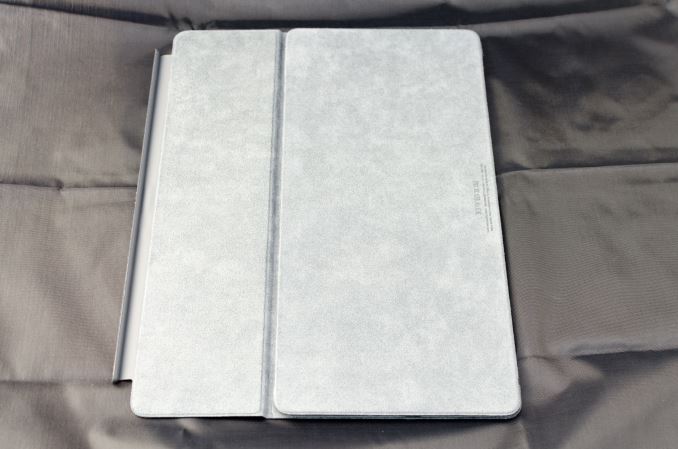
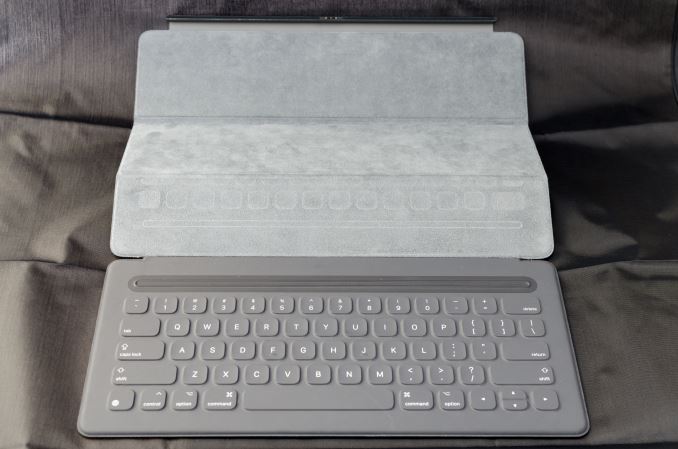
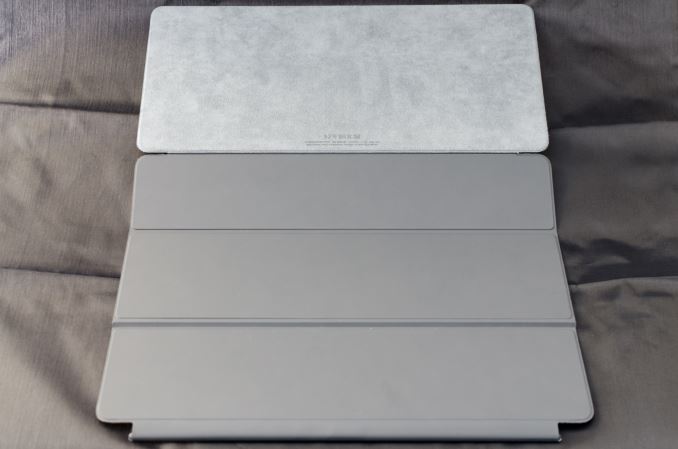
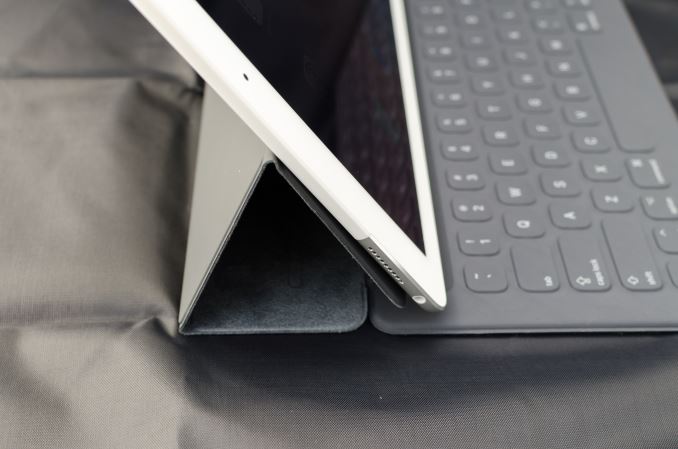
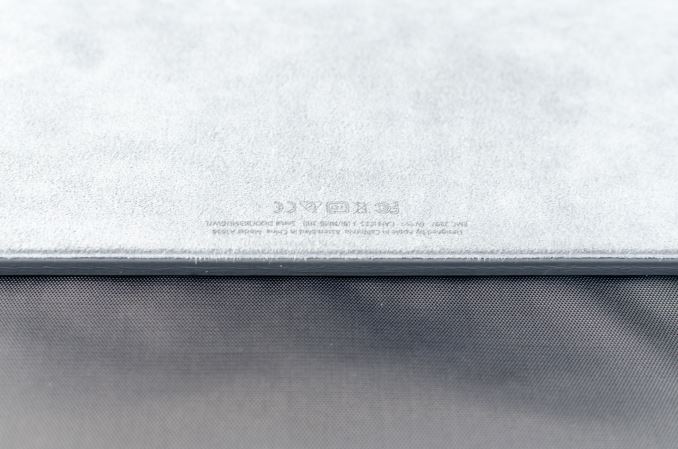








408 Comments
View All Comments
valentin-835 - Sunday, January 24, 2016 - link
Same here. I thought I was reading a novel.FunBunny2 - Sunday, January 24, 2016 - link
-- Same here. I thought I was reading a novel.Same here. I thought I was reading Ulysses.
Constructor - Saturday, January 23, 2016 - link
I had to copy that text block to an editor and insert paragraphs after all periods. You know, you can actually use paragraphs in a comment here...! ;-)My own experience with the iPad Pro is generally consistent with yours, even though my usage differs from yours.
I've got the Pencil and it is indeed very, very good; Precise and with hardly any noticeable latency unless I crank up the size of the respective drawing tool. Because of the low latency and very little parallax aberration there's no need for an additional "hover cursor".
Charging time could be better but is usually bearable (especially when coming from an iPad 3 which could take up to 7 hours when completely drained!).
The iPad Pro is an excellent mobile TV, streaming radio and general music player whenever I can't have big speakers or headphones. No real bass, but still good range and very good volume at low distortions.
And it is near perfect for anything document-related due to its size: Unrestricted full-page use with documents is finally a reality! Also excellent for reading books, magazines or just simply the web.
I personally can write almost as fast on the virtual keyboard as on a desktop one, so I don't really need a physical keyboard for the iPad.
Gaming is also fantastic (pinball, Real Racing etc.).
Regarding the "Kickstand" I've found one that's near-perfect: Simple, sturdy, adjustable, compact (foldable and pocketable) and even pretty stable with the iPad Pro in portrait orientation. The iPad even fits into the stand with the normal Smart Cover (without keyboard) folded on its back. And yet I can leave the stand off when I don't need it. For me that's a near-perfect solution. And it's even cheap:
http://www.arktis.de/arktispro-ipad-aluminium-stae...
It's actually a China-made OEM product with no manufacturer specified on the box. It's just called "universal stand for tablet pc/smart phone" on the box. I'd expect that other distributors in other countries might have it as well.
Constructor - Saturday, January 23, 2016 - link
Just found it on Amazon as well:http://www.amazon.com/TechMatte-Multi-Angle-Alumin...
digiguy - Saturday, January 23, 2016 - link
I didn't say it, despite my long post, but I too use it as a mobile tv and for games like pinball, real racing, need for speed etc. And in addition to the case, I have several stands for portrait mode. Among them this from amazon http://www.amazon.com/gp/product/B0055CR9R0?psc=1&... (great for cable management)As for the pencil, well here in Switzerland it's still no available....
Constructor - Saturday, January 23, 2016 - link
Nice. Yeah, with my stand I could only charge it from the top (which is possible, though).The Pencil should at least be available online, is it not?
digiguy - Sunday, January 24, 2016 - link
In theory yes, but I think it's imported from the States as currently it costs around 160 EUR from Amazon France for instance. At this price I'll wait for it to be available locally.... Should be there in 2-3 weeks according to the apple storeKPOM - Saturday, January 23, 2016 - link
I have an iPad Pro with a Pencil and Smart Keyboard. Here is my take. If you are a notebook power user, this won't replace it. Even I don't see it replacing my MacBook. However, if you are an artist, you'll love the Pencil. It's the same if you like taking notes.With Office 365, a few other apps (iMazing or a decent Cloud service such as OneDrive or even iCloud with extra storage, GoodReader, OneNote or Evernote, this could easily be a road device for someone. Office is surprisingly useful, the screen is really nice, and the keyboard works better than I expected it. It feels nicer than the one on the new MacBook, but it isn't backlit (which is a negative). Hopefully iOS 10 opens up some new iPad Pro-only features to enable developers to take better advantage of the decent hardware.
metayoshi - Saturday, January 23, 2016 - link
I kind of disagree with the sentiment the iPad Pro is "the only game in town," when the Surface Pro clearly has a huge advantage when it comes to using legacy applications and other peripherals when it comes down to being a "Pro." For example, the Surface line still has a full fledged USB port on it, and that allows it to be used with a lot of 3rd party peripherals like USB instruments and other devices. Heck, even staying within the Apple ecosystem here, a full fledged Macbook laptop is still a better choice here, but then you sacrifice the whole appeal of a 2-in-1 device.I'm not saying the iPad Pro isn't a great device. I'm sure it is, especially after reading the whole review. But it's still not going to sway me from choosing a Surface Pro 4 (or even a Surface 3) over something like this.
glenn.tx - Saturday, January 23, 2016 - link
Completely agree. As a software consultant, I use my primary computer 12 hours a day. That computer has been the i7 SP2, i7SP3, and now the i5 Surface Pro 4. (Additional 2-3 hrs/day as a tablet in bed) Every version has been a God send. There is absolutely no way I could (or would) use the iPad Pro as my primary PC/Notebook. When you work in reality, the differences can be ignored.